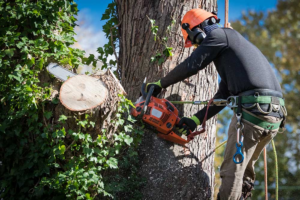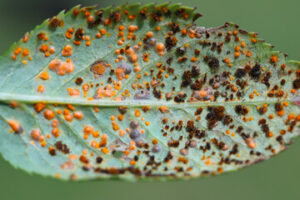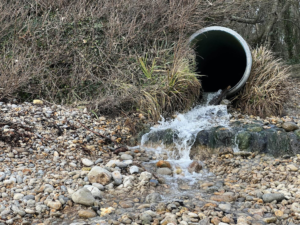Small Business Insurance protects businesses from financial loss in the event of accidents or professional mistakes. Choosing the right policy involves understanding coverage, limits and costs.
Several companies offer small business insurance in the US. Incorporation Guru’s top pick is Hiscox, which offers commercial insurance for home-based and independent contractors.

Having the right business insurance policies can save enterprises thousands, even millions, in the event of an unfortunate incident or catastrophe. While determining the amount of coverage a company requires can be challenging, consulting with a professional and carrying out a risk assessment are two good places to start.
There are a number of companies that offer small business insurance, with each offering slightly different options. Incorporation Guru’s top pick is Chubb, which provides cheap small business insurance with a high financial strength score and broad coverage across all industries. For example, the firm’s Business Owners Policy (BOP) includes property and liability coverage and can be customized with various endorsements. These include earthquake insurance, equipment breakdown, foreign liability, and water coverage.
Another great option is Hiscox, which focuses exclusively on business insurance. The firm’s affordable packages cater to entrepreneurs, freelancers, home-based businesses, and sole proprietors who have lower risk profiles than larger corporations. These companies tend to have fewer assets and smaller budgets, making Hiscox’s low-cost plans ideal.
General liability insurance is also important for small businesses, as it protects them against claims of bodily injury or property damage that can arise from their work activities. This type of coverage can also provide protection against lawsuits related to slander, false advertising, copyright infringement, and more. Many insurance providers offer this policy bundled with commercial property insurance in a package called a business owners policy, or BOP.
Other types of business insurance that should not be overlooked are workers’ compensation, which covers employees if they are injured on the job, and employment practice liability, which covers lawsuits related to wrongful termination, discrimination, harassment, and other violations. In addition, a commercial auto insurance policy should be considered, as it can cover damage to business-owned vehicles and accidents that occur while they are being driven for work purposes.
The best small business insurance companies will offer a wide selection of policies, competitive premiums, and quick quotes. It is also important to find an insurer with a strong track record of customer satisfaction, and the ability to pay claims quickly in the event of a claim.
General Liability Insurance
The daily activities of a business can expose it to a wide range of liabilities, from customers or clients claiming bodily injury and property damage to lawsuits over advertising and copyright infringement. General liability insurance offers a safety net for these financial losses and can help protect against the potentially crippling costs of legal fees, settlements and judgments.
This is the most common type of small business insurance, covering the cost of lawsuits over bodily injury or property damage. Some examples include a customer slipping and falling in a store or an employee accidentally breaking a client’s windows during a service call. In addition, the policy can help cover medical expenses for anyone injured at your business.
It’s important to remember that this policy only covers third party claims. It doesn’t cover any damages or injuries caused to your own employees, which may require a separate policy such as workers’ compensation insurance. It also doesn’t cover professional errors or omissions, which should be covered by a separate policy such as errors and omissions insurance or cyber insurance.
GEICO can help you customize a general liability policy with the right coverage for your business. Get a free quote now.
Many businesses are required to show proof of this type of insurance to secure a commercial lease or work with specific clients. It can also be helpful when applying for loans or financing, as lenders may view the lack of this insurance as a risk factor.
The standard general liability policy typically comes with $1 million per occurrence/$2 million aggregate policy limits. However, higher risks or larger revenue levels can be covered with a commercial umbrella insurance policy that provides additional limit protection.
Other types of business insurance can include workers’ compensation, professional liability and directors & officers liability. These are not necessary for all small businesses, but they can provide peace of mind and help ensure the continued operations of your business in case of a loss or disaster. To find the best coverage for your business, consult with an experienced and licensed insurance consultant who can evaluate your risks, design a plan and recommend the most cost-effective options.
Directors & Officers Liability Insurance
You’ve invested a lot of time and money into your business, so it’s important to protect yourself from the financial risks that could threaten it. Whether it’s a lawsuit, employee injury or the loss of your office equipment, the right small business insurance policies can help you bounce back from unexpected losses.
Directors & officers liability (D&O) is a specific type of insurance that safeguards the personal assets of corporate directors and officers in the event they are sued for actual or alleged wrongdoing in managing a company. D&O insurance is often bundled with other types of business insurance, such as general liability insurance or professional liability insurance (also known as errors and omissions coverage) to provide an integrated package of protection for directors and officers.
D&O policies offer specialized coverage that is not typically provided by standard business insurance policies, such as commercial general liability, crime, or workers’ compensation. D&O policies also differ from other liability policies by offering two distinct parts: Side A coverage and Side B coverage. Side A coverage protects the personal assets of directors and officers in cases where the company cannot or will not indemnify them, which may include situations such as bankruptcy.
The other part of D&O coverage, commonly referred to as Side B coverage, covers the legal fees and expenses of defending directors and officers in a lawsuit. The vast majority of D&O policies have an explicit duty to defend, which is unlike many other liability insurance policies where the insurer has no obligation to defend its insureds in the face of a lawsuit.
While D&O insurance is typically offered by for-profit companies, a growing number of nonprofits are seeking it as well. Because the risk of a claim is based on decisions and actions taken by a nonprofit’s board members, officers, and employees, it’s important to have a policy that specifically addresses these unique exposures. D&O insurance can also be combined with other types of small business insurance, such as employment practices liability coverage to address claims arising from wrongful termination or job discrimination.
Commercial Auto Insurance
Commercial auto insurance, also known as business automobile coverage, protects the cars, trucks and vans your company uses in its operations. Whether you own them or lease them, this policy provides liability and physical damage coverage for your business’s vehicles. It can include optional coverages such as hired and non-owned auto liability, personal injury/medical payments and collision or comprehensive.
What kind of businesses need commercial auto insurance?
Contractors that haul equipment to and from job sites, such as landscapers or construction companies, require this type of coverage. Delivery services that use vehicles to transport goods or supplies, such as pizza or food service businesses, need protection if their cargo is damaged in an accident. Transportation services that drive people, such as taxicabs or limousines, need commercial car insurance if they get into an accident while carrying passengers.
If your employees occasionally drive their own personal cars or trucks on company business, you may need an additional policy called non-owned and hired auto liability coverage. This add-on to your commercial auto policy covers the liability if one of these vehicles is in an accident while on business, and it can be extended to cover employees’ personal vehicles as well.
Another optional policy to consider is inland marine coverage. This coverage, available through a general liability or commercial auto policy, insures tools and materials left in the care of your employees or that are temporarily in company vehicles. It can be extended to cover vehicles and contents shipped by air or rail, as well as items that are in storage for long periods of time.
While state minimums for commercial auto liability are generally the same as for personal policies, many small businesses opt to carry higher limits to protect their assets. As with other small business insurance policies, the options for commercial auto are diverse, and you can customize your coverage to fit your unique needs. An experienced insurance consultant can help you evaluate your business’s risks and design a policy that’s right for you. A reputable independent agent will have relationships with several carriers and can shop your policy for the best price and terms.








